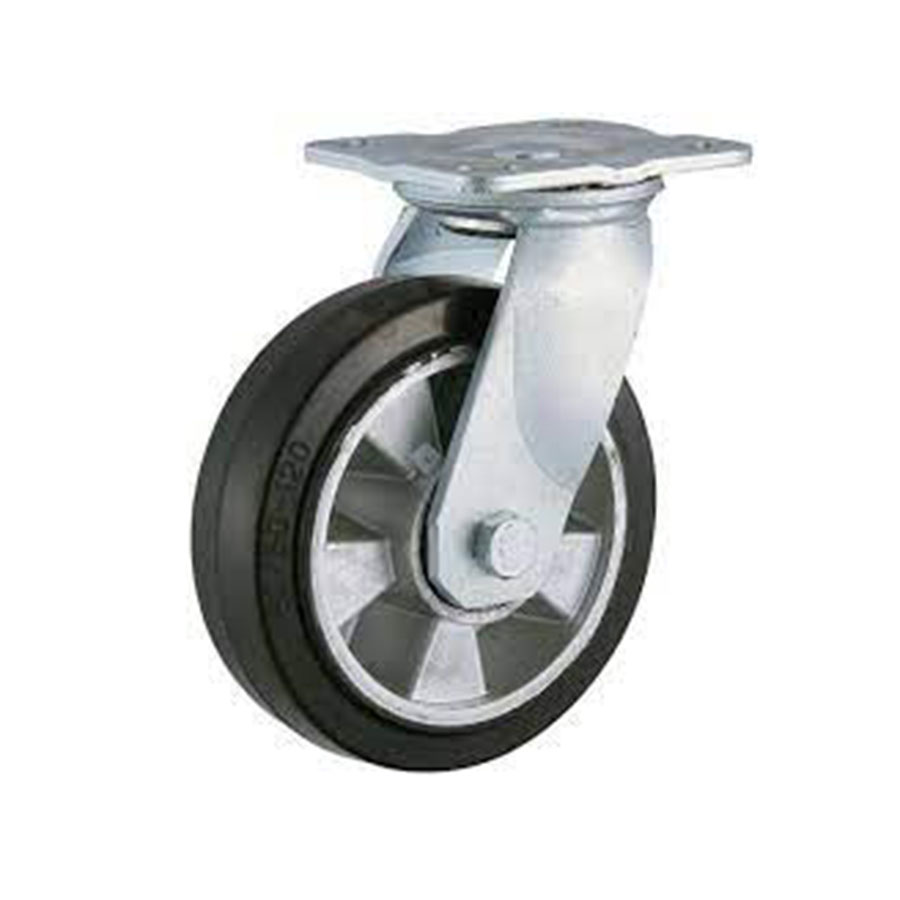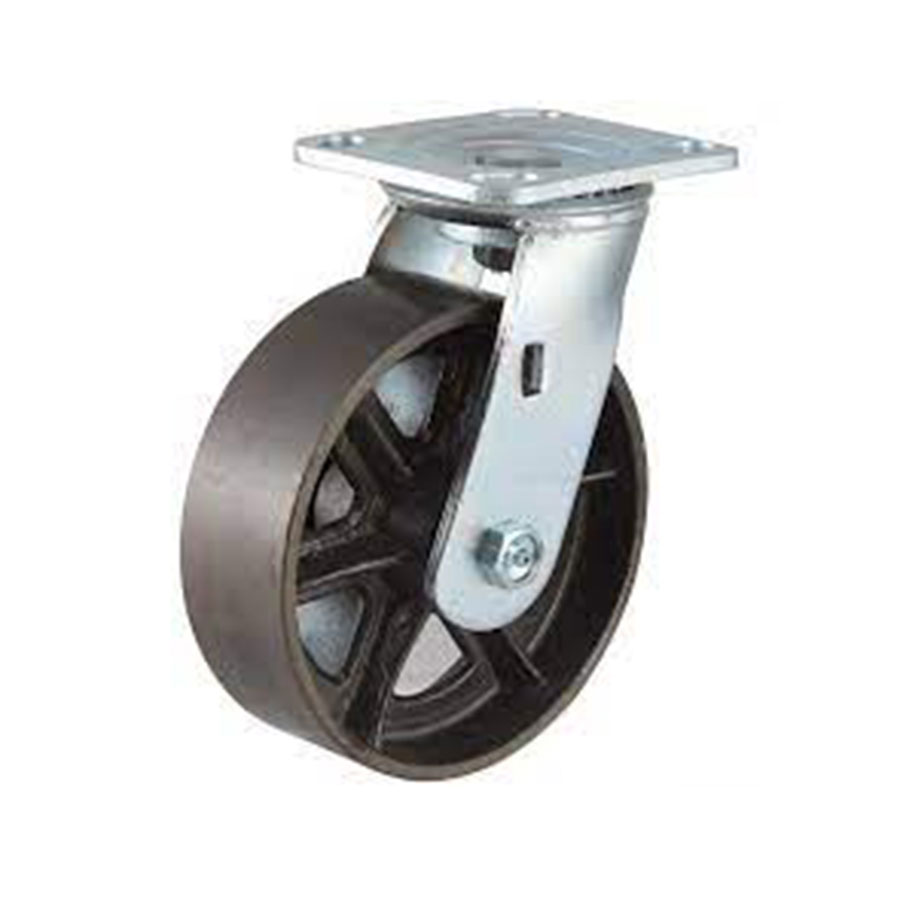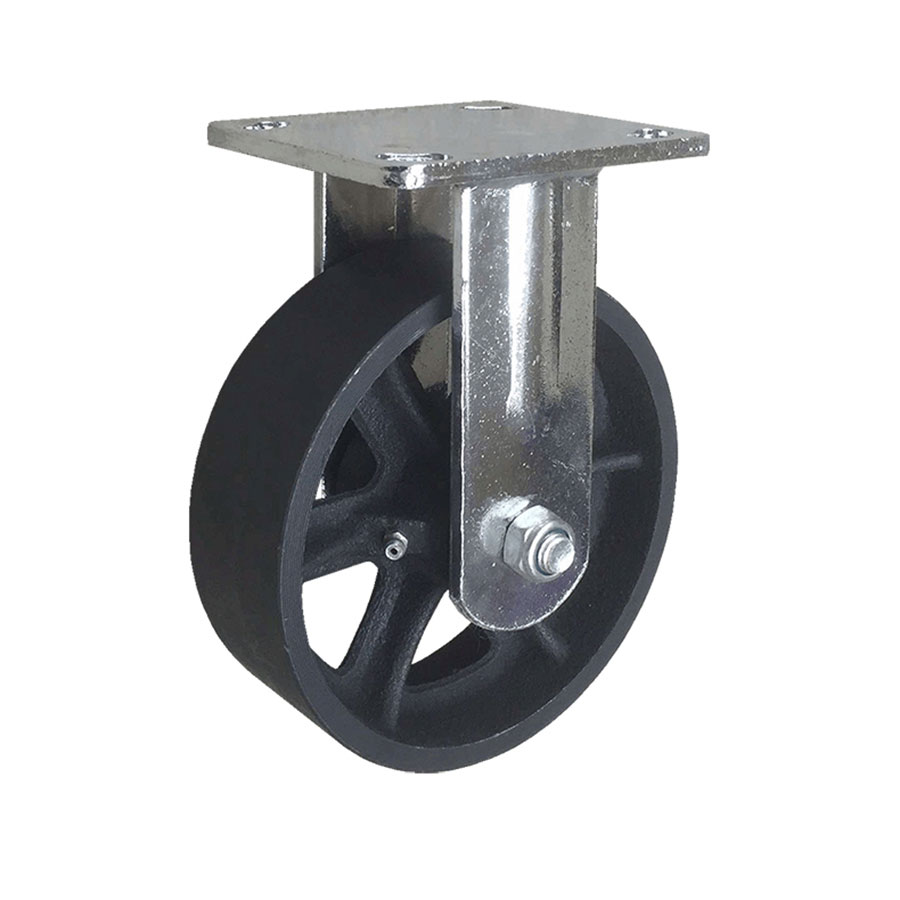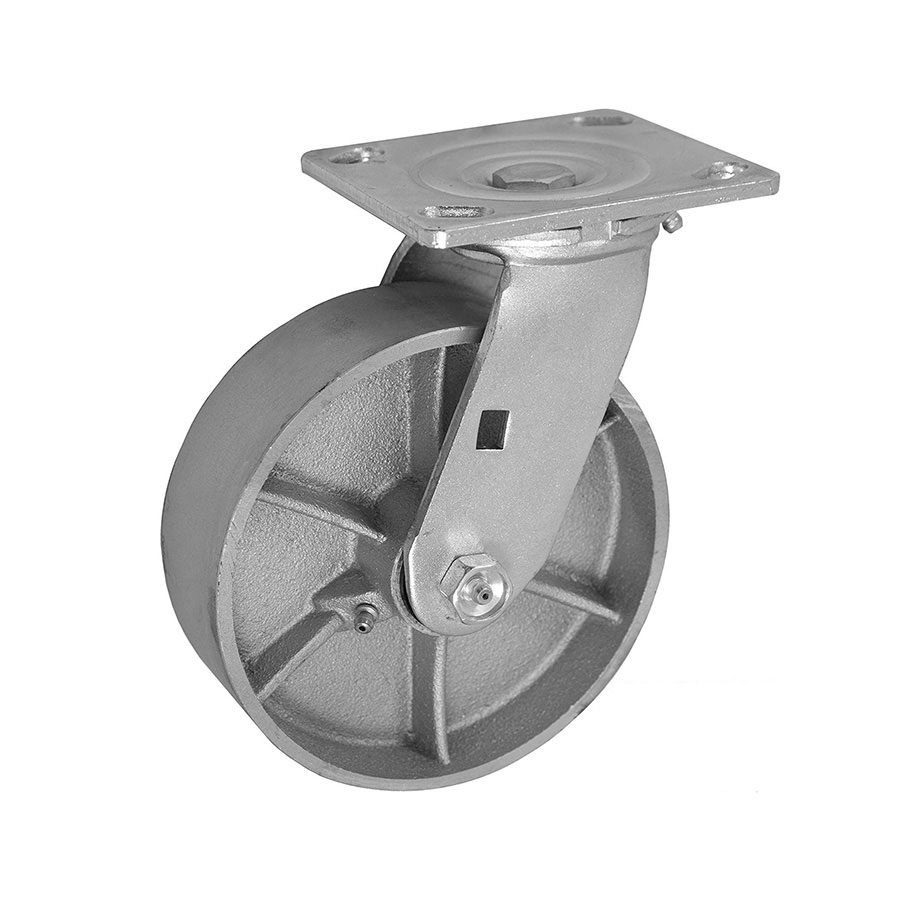A caster is a device consisting of a single or multiple wheels, which may be the equipment or platform mounted on it to move. The casters are passively driven. Casters usually consist of wheels and brackets, sometimes with brake parts, etc. Casters are a general term, including movable casters, fixed casters and movable casters with brakes. The movable caster is also called the universal wheel, its structure allows 360-degree rotation; the fixed caster is also called the directional caster, it has no rotating structure and cannot be rotated. Usually two kinds of casters are used in combination. For example, the structure of the trolley is two directional wheels in the front, and two universal wheels in the back near the push armrest. Brake caster refers to a caster equipped with a brake function. Casters are widely used, mainly used in trolleys, mobile scaffolding, workshop trucks and so on. Specific to the industry, casters are widely used in industry, commerce, medical equipment, machinery and equipment, logistics and transportation, environmental cleaning supplies, furniture, electrical appliances, beauty equipment, craft products, pet supplies, hardware products and other industries.
Cast iron casters are made of cast iron (usually gray iron, and a few also use ductile iron) casting and molding, and then the surface is processed and surface treated by painting, electrophoresis, etc. Cast iron casters have many characteristics, such as smooth surface, wear resistance, load resistance, impact resistance, high and low temperature resistance, chemical corrosion resistance, etc. Cast iron casters can adapt to various harsh environments, and the manufacturing cost is lower than forged steel casters or die-forged full-iron casters.
Classification of casters:
Classified according to material: casters can be divided into PP casters, PVC casters, PU casters, cast iron casters, nylon casters, TPR casters, iron core nylon casters, iron core PU casters, etc.
According to the load-bearing classification, casters can be divided into miniature casters, light-duty casters, medium-duty casters, heavy-duty casters, super-heavy-duty casters and so on.
According to whether the caster is turned: directional caster and non-directional caster (ie swivel caster). The directional caster has no rotating structure and cannot be rotated; the structure of the swivel caster allows 360-degree rotation.
Other categories: special-shaped casters and brake casters, shock-absorbing casters and adjustable casters, etc.
Structural features of casters:
1. Installation height: refers to the vertical distance from the ground to the installation location of the equipment, and the installation height of the caster refers to the maximum vertical distance from the bottom plate of the caster and the edge of the wheel.
2. Bracket turning center distance: refers to the horizontal distance from the vertical line of the center rivet to the center of the wheel core.
3. Turning radius: refers to the horizontal distance from the vertical line of the center rivet to the outer edge of the tire. The appropriate distance enables the caster to turn 360 degrees. Whether the turning radius is reasonable or not directly affects the service life of the caster.
4. Driving load: The load-bearing capacity of the caster when moving is also called the dynamic load. The dynamic load of the caster varies due to the different test methods of the factory and the material of the wheel. The key is whether the structure and quality of the bracket can resist the load. Shock and shock.
5. Shock load: the instantaneous load-bearing capacity of the caster when the equipment is impacted or vibrated by the load. Static load Static load Static load Static load: The weight that the caster can bear in a static state. The static load should generally be 5 to 6 times the exercise load (dynamic load), and the static load should be at least 2 times the impact load.
6. Steering: Hard, narrow wheels are easier to steer than soft, wide wheels. The turning radius is an important parameter for wheel rotation. If the turning radius is too short, it will increase the difficulty of steering, and if the turning radius is too large, it will cause the wheel to shake and shorten its life.
7. Driving flexibility: The factors that affect the driving flexibility of casters include the structure of the bracket and the selection of steel for the bracket, the size of the wheel, the type of the wheel, the bearing, etc. The larger the wheel, the better the driving flexibility, and it is hard and narrow on a stable ground Small wheels are less labor-intensive than flat-edged soft wheels, but soft wheels are less labor-intensive on uneven ground, but soft wheels can better protect equipment and absorb shocks on uneven ground.
Cast iron heavy-duty casters installation method:
1. Casters must be installed in the location specified by the manufacturer.
2. The installed caster brackets must have sufficient strength to meet the load-bearing capacity during use.
3. The function of the casters cannot be changed or affected by the mounting device.
4. The axis of rotation must always be vertical.
5. The fixed casters must be in line with their axles.
How to choose casters:
1. Selection of caster wheels
For the material of caster wheels, first consider the size of the road surface, obstacles, residual substances on the use site (such as iron filings, grease), environmental conditions (such as high temperature, normal temperature or low temperature) and the weight that the wheels can carry. conditions to determine the selection of suitable wheel material. For example, rubber wheels are not resistant to acid, grease and chemicals, while super polyurethane wheels, high-strength polyurethane wheels, nylon wheels, steel wheels and high temperature wheels are suitable for different special environments. Usually the wheels are nylon wheels, super polyurethane wheels, high-strength polyurethane wheels, high-strength synthetic rubber wheels, cast iron wheels, and inflatable wheels. Super polyurethane wheels and high-strength polyurethane wheels can meet your handling requirements whether they are running on indoor or outdoor ground; high-strength synthetic rubber wheels can be used in hotels, medical equipment, floors, wooden floors, tile floors, etc. It is required to drive on the ground with low noise and quiet when walking; nylon wheels and iron wheels are suitable for places with uneven ground or iron filings and other substances on the ground; while inflatable wheels are suitable for occasions with light load and soft and uneven road surface.
2. Calculate the load capacity: In order to be able to calculate the load capacity required by various casters, it is necessary to know the self-weight of the transport equipment, the maximum load and the number of wheels and casters used. The required load capacity of a single wheel or caster is calculated as follows: T=(E+Z)/M×N, where T=the required load capacity of a single wheel or caster, E=self-weight of the transport equipment, Z=maximum load, M = the number of single wheels and casters used, N = safety factor (about 1.3-1.5). Special Note: Because 3 points determine a plane, when the number of casters used is 4, the load capacity should be calculated as 3 wheels.
3. Determine the wheel diameter of the caster wheel: Generally, the larger the wheel diameter, the easier it is to push, the greater the load capacity, and the better the protection of the ground from damage. The selection of the wheel diameter should first consider the weight of the load and the size of the truck under the load. The starting thrust is determined.
4. Rotation flexibility: the larger the single wheel, the more labor-saving it is to rotate, the roller bearing can carry heavier loads, and the resistance during rotation is larger: the single wheel is installed with high-quality (bearing steel) ball bearings, which can carry heavier loads , the rotation is lighter, flexible and quiet.
5. Temperature conditions: Severe cold and high temperature have a great impact on casters. Polyurethane wheels can rotate flexibly and freely at low temperatures of minus 45 °C, and high temperature wheels can rotate easily at high temperatures of 275 °C.
How to choose a caster wheel frame:
1. Usually, when choosing a suitable wheel frame, the first consideration is the weight carried by the caster. In supermarkets, schools, hospitals, office buildings, hotels and other places, because the floor is good, smooth and the goods to be handled are light, (each caster carries 10-140 kg), it is suitable to choose to punch with thin steel plates (2-4 mm). The formed electroplating wheel frame is light, flexible in operation, quiet and beautiful. This electroplating wheel frame is divided into double-row balls and single-row balls according to the ball arrangement. Double-row beads should be used for frequent movement or handling.
2. In factories, warehouses and other places, where the goods are frequently transported and the load is heavy (each caster carries 280-420 kg), it is suitable to use the double-row balls that are stamped, hot-forged and welded with thick steel plates (5-6 mm). wheel frame.
3. If casters are used to transport heavy objects such as textile factories, automobile factories, machinery factories, etc., due to the heavy load and long walking distance in the factory (each caster carries 350-1200 kg), thick steel plates (8-1200 kg) should be selected 0.12 mm) The wheel frame welded after cutting, the movable wheel frame uses plane ball bearings and ball bearings on the bottom plate, so that the casters can bear heavy loads, rotate flexibly, and have functions such as impact resistance.
How to choose caster bearings:
1. Roller bearings: Roller bearings that have undergone heat treatment can carry heavier loads and have average rotational flexibility.
2. Ball bearing: The ball bearing made of high-quality bearing steel can carry heavier loads and is suitable for occasions requiring flexible and quiet rotation.
3. Plane bearing: suitable for high and extra high load and high speed occasions.
Precautions during the use of casters:
1. Avoid being overweight.
2. Do not bias.
3. Regular maintenance, such as regular oiling, and timely inspection of screws.
Post time: Jan-15-2022





